
Apotheosis of the English period of the creation of Van Dyck art critics consider his work “Charles I in three angles”. The portrait was started by the artist most likely in the second half of 1635, when the king “was in full bloom of his life-giving forces, generously released to him.” He was more melancholic than gay, he had a good-looking appearance, as pleasant as serious The actions of the king testify that he does not have excessive desires and despotic inclinations, and he really is a sovereign, full of good and justice. “
In the portrait, Van Dyke brings in the transfer of colors, forms and light such fidelity that the King appears before the eyes of the audience in all the subtleties of their experiences. It is through the conscientious study of the outer, so to speak, shell of the great masters of the Middle Ages and achieved the reproduction of the soul of the people they portrayed.
The portrait of Charles I in three angles was to be sent to Rome by the sculptor Lorenzo Bernini, to whom the canvas was to replace the living model. Using it, the sculptor had to fashion the bust of Charles I.
The Holy See planned to bring the marble bust of Charles I to Queen Henrietta Maria, and the order was made by Pope Urban VIII at a time when the Vatican had the hope of returning England to the bosom of the Catholic Church. Leaving his homeland after the wedding, the French princess Henrietta Maria promised the pope and her brother the French king that he would raise his children in the Catholic faith and would be its champion in the heretical country. Because Gregorio Panzani, the papal nuncio in London, in July 1635 and informed the pope that the English king was very pleased with the permission to sculpt his bust, which the Pope gave Lorenzo Bernini.
Van Dyck perfectly understood that the triple portrait would be meticulously considered by Roman artists and connoisseurs, and worked on it with particular care. The portrait was created on an unusual order – Bernini needed only the head of the king, the Flemish, probably inspired by the “Portrait of a man in three angles” Lorenzo Lotto, who was in the Royal Assembly.
The triple portrait of Charles I is made to the waist and depicts the king in profile, three quarters and full face in the face of a stormy sky. On the king, three camisoles of different colors, but the same lace collar. To the left, the king holds the satin ribbon with the small Georgiy hanging on it, with his right hand holding the cloak. The viewer sees here familiar from the previous portraits of the dense eyebrows of the king, his heavy eyelids, a long nose, an upstanding mustache, a shock of hair and a pinched pointed beard. On the left image hair is longer than on the right. The king’s gaze is contemplative and detached, and his whole appearance is imbued with kingship and dignity.
The portrait pleased the king, and in his letter to Bernini, Charles I expressed the hope that the sculptor “sculpts our image in marble in our likeness on canvas, which will soon be sent to him.”
Having received the picture, the sculptor noted “some bitter doom, read in the features of this outstanding sovereign.” He made the bust of Charles I in the summer of 1636, and in the spring of the following year Cardinal Barberini took care of sending the work to England. Bust arrived at the Outland Palace in July 1637 and was enthusiastically received “not only for the skill of execution, but also because of the extreme similarity with the guise of the king.” The adorable queen awarded Barberini a diamond worth 4,000 scudies.
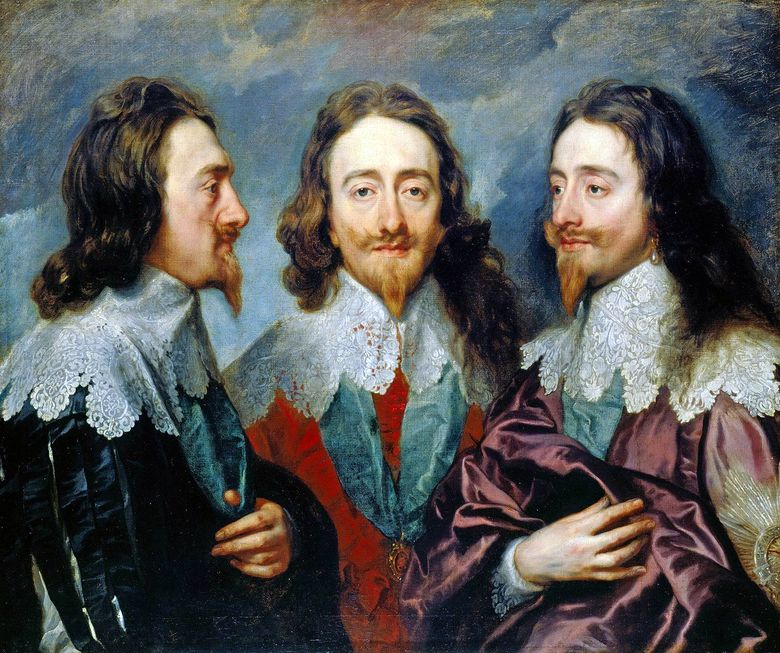 Charles I sous trois angles – Anthony Van Dyck
Charles I sous trois angles – Anthony Van Dyck Equestrian portrait of Charles I by Anthony Van Dyck
Equestrian portrait of Charles I by Anthony Van Dyck Charles I, King of England, on the hunt by Anthony Van Dyck
Charles I, King of England, on the hunt by Anthony Van Dyck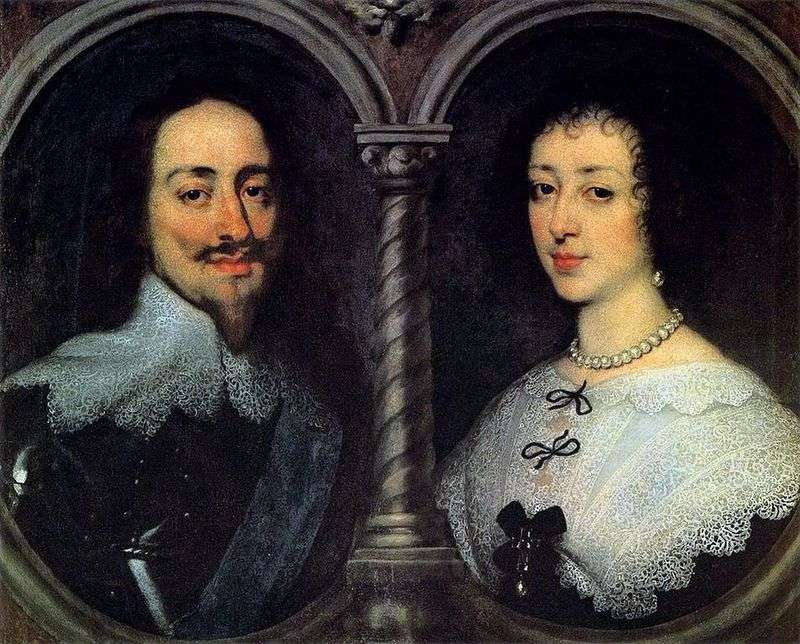 Portrait of Charles I and Henrietta Maria by Anthony Van Dyck
Portrait of Charles I and Henrietta Maria by Anthony Van Dyck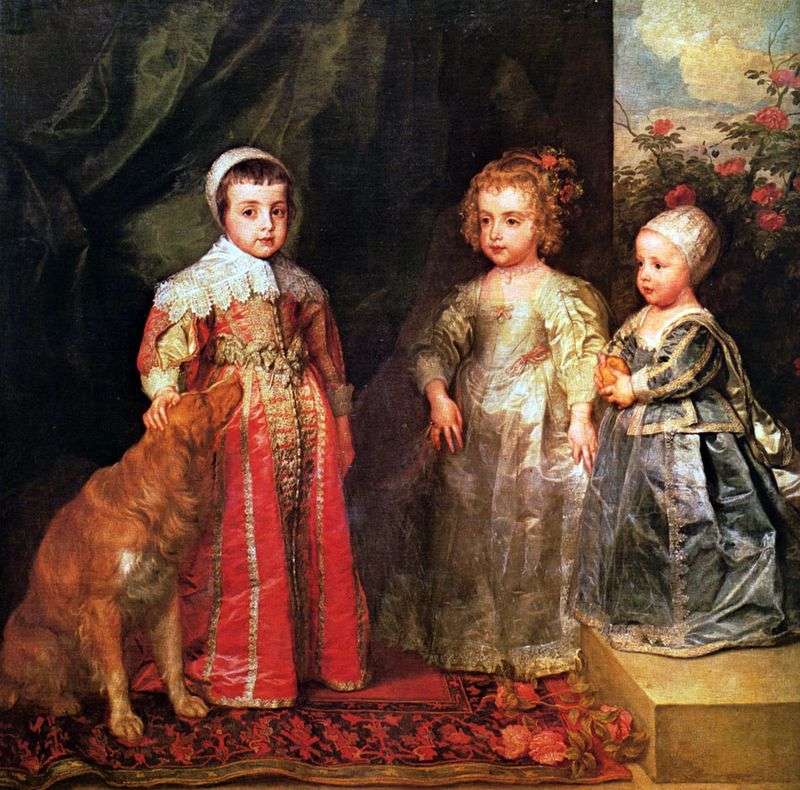 Portrait of three older children of Charles I by Anthony Van Dyck
Portrait of three older children of Charles I by Anthony Van Dyck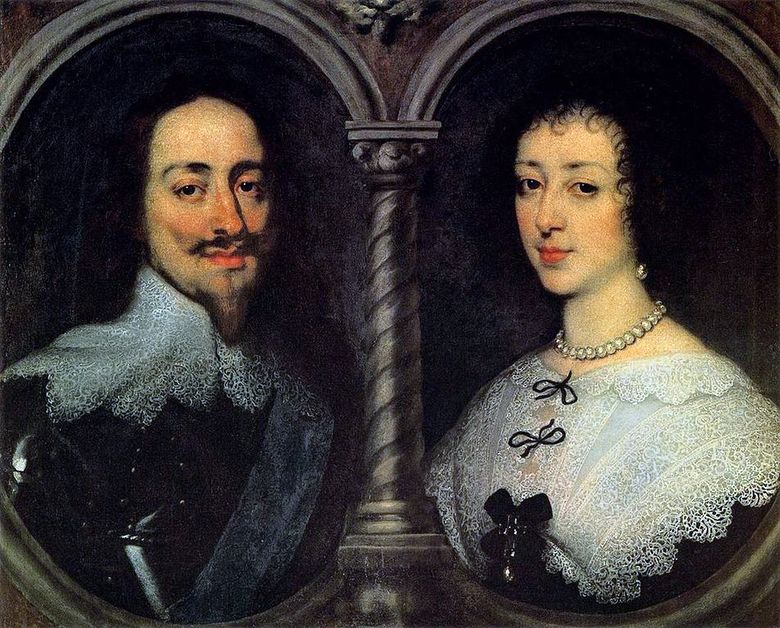 Portrait de Charles I et Henrietta Maria – Anthony Van Dyck
Portrait de Charles I et Henrietta Maria – Anthony Van Dyck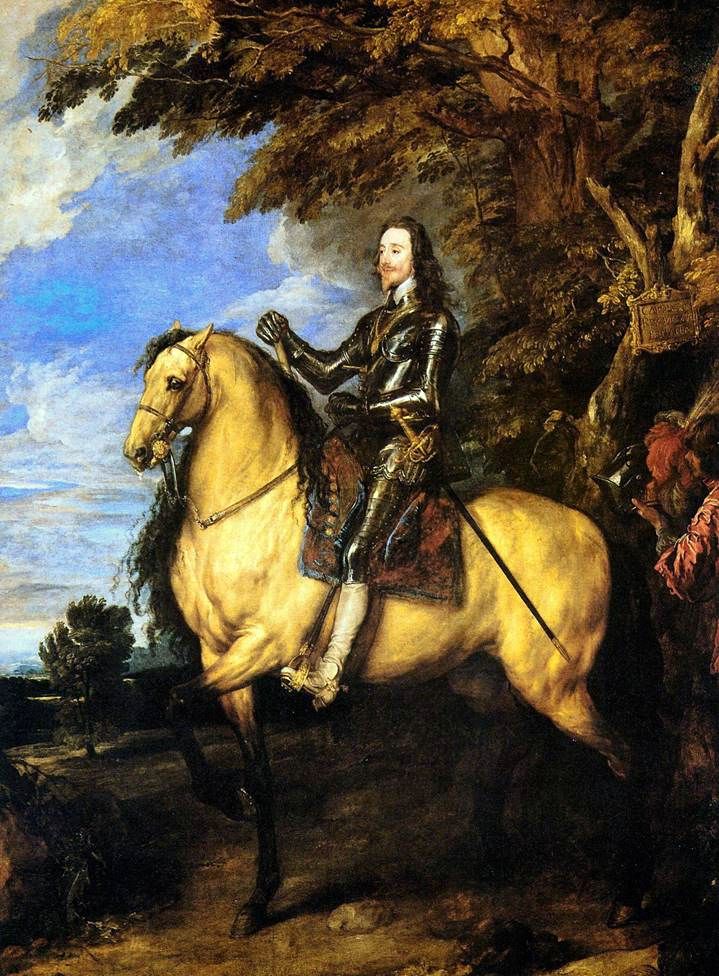 Portrait équestre de Charles I – Anthony Van Dyck
Portrait équestre de Charles I – Anthony Van Dyck Charles I en tres ángulos – Anthony Van Dyck
Charles I en tres ángulos – Anthony Van Dyck